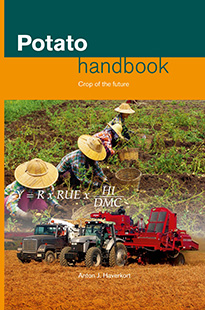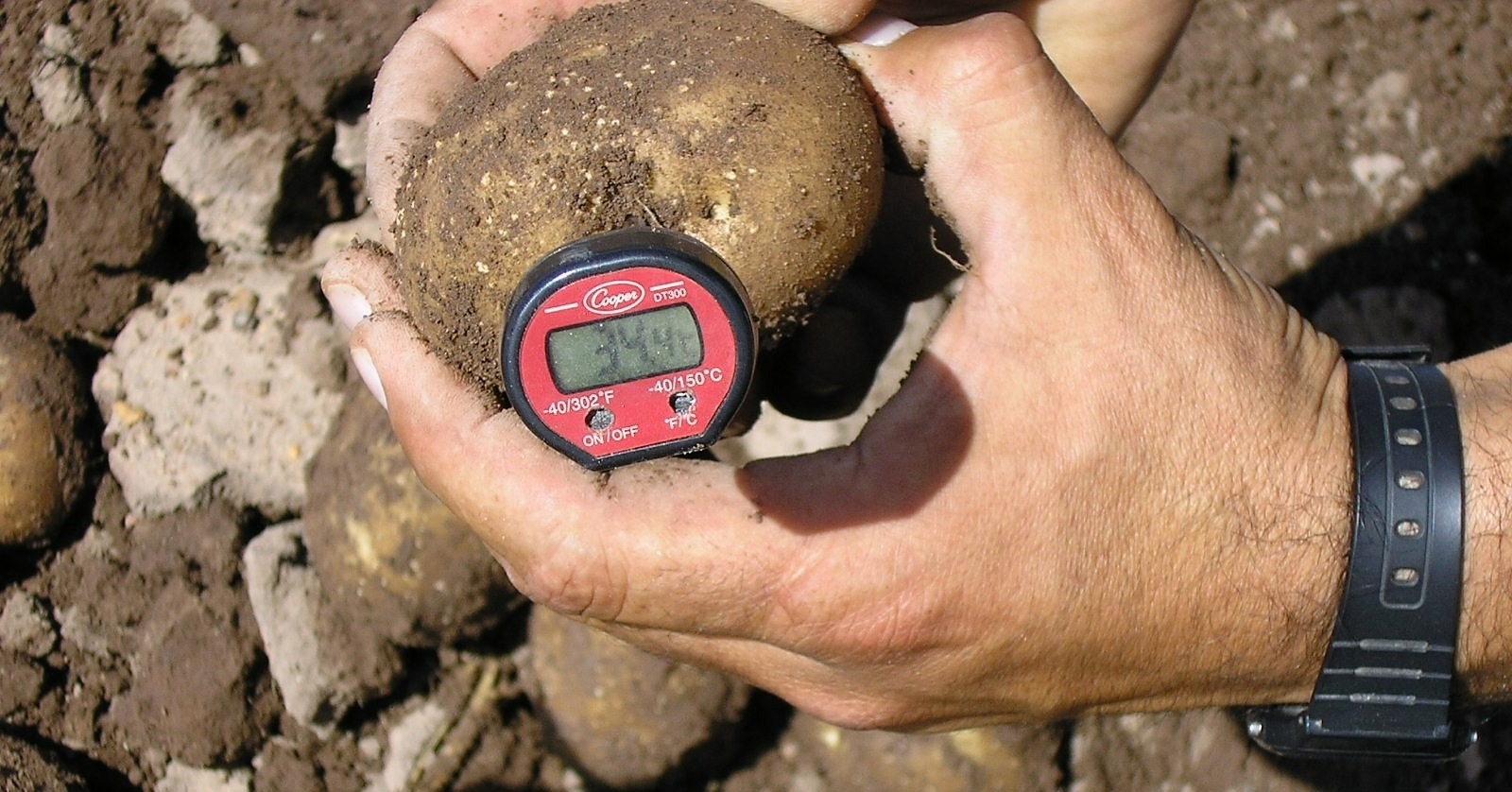Already a subscriber? Activate your premium account

Potato Handbook

The model used to calculate potential potato yield (see image below) assumes that there is no lack of water nor that yields are limited by lack of minerals. It is also assumed that yields are not reduced by weeds, pests and diseases. Economic deliberations such as reduced uneconomical response of high doses of inputs are not considered either.
The only influence on yield are temperature and solar radiation that vary among years. Long frosty winters reduce the length of the summer crops and long periods of hot summers reduce the length of the growing season in winter. Very cold spells and heat waves negatively influence radiation use efficiency (RUE) and potential yields. Additionally, the model is also used to explore yields with varying planting and harvest times, for harvest planning purposes. Growers, for instance, want to plant and harvest early to fetch an elevated price that consumers pay for off season products. Processing companies also pay a premium for early delivery to the factory. Another application is the use of the model in an ongoing season with real-time weather data for yield forecasting purposes.
Predicting the final yield
The model is fed with real-time weather and produces calculated curves of ground cover and tuber growth. When at a certain moment during the season a grower or a processing company is interested in predicting the final yield, actual weather data stop as of then and long-term weather data of the past from the current date till crop end are inserted into the model. The model as of then produces a series of yield curves which give a good estimation of the range of expected final yields. The closer to the final date of crop end, the narrower the range becomes.

Taking into consideration that tuber fresh matter yield (Y in g/m2) depends on the amount of solar radiation that is intercepted by the canopy (R in MJ/m2) with a radiation use efficiency (RUE) of 1.25 g dry matter per mega joule global radiation; also taking into consideration that the harvest index (HI) at crop end is 0.75 g tuber/g total biomass; and further considering that the dry matter concentration (DMC) as the proportion g dry matter/g fresh is inversely correlated to fresh yield, as lower dry matter leads to higher fresh yields, the equation above holds.
Events
©2015 - 2024 Potatoworld | Webdesign and realisation COMMPRO